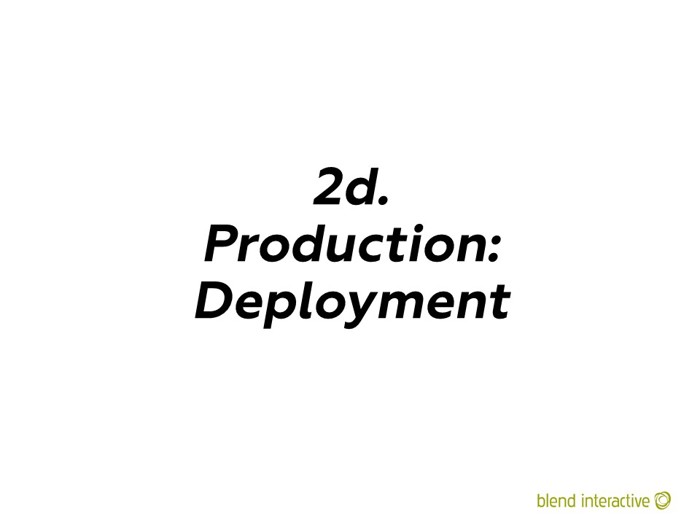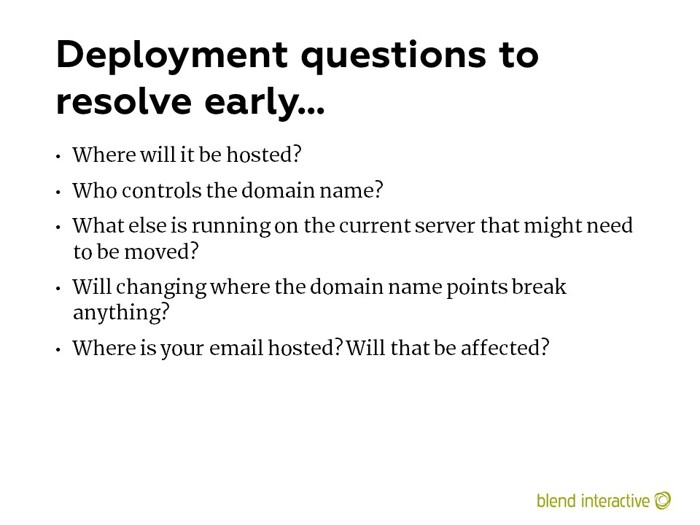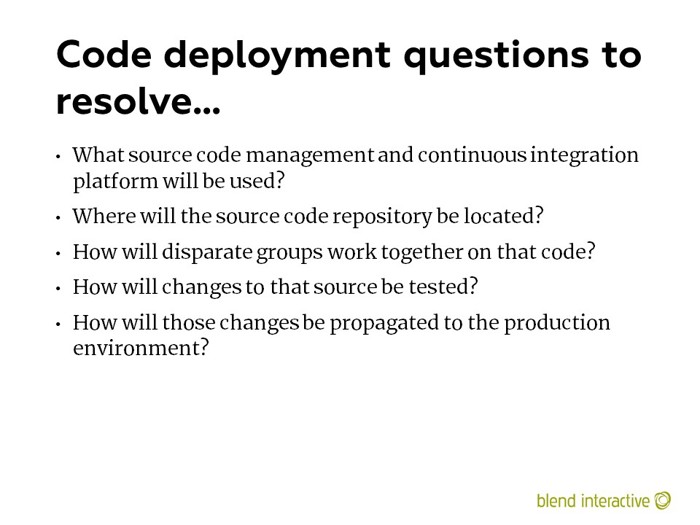CMS Implementations Deck
Section: Production: Deployment (11 slides)
- The images will load as you scroll to them. If you scroll too fast, you might get ahead of the loading.
- The permalink goes to the single page for a slide with “Prev” and “Next” links. It's suitable for bookmarking or sharing.
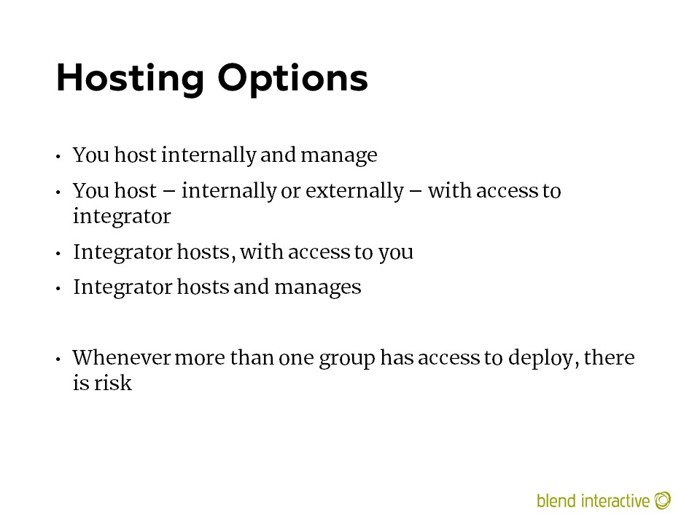
This was before the huge push to cloud. The dominant model now isn’t even on here – vendor hosts “in the cloud.”

This slide should refer to a more important issue – site disposition. Have an early conversation about who’s going to manage the site after it launches. Are you (the organization) going to take it over? Or will you maintain a relationship with the integrator?
And, as this slide says, who is going to host it? You? The integrator? The CMS vendor? A third party?
Look into the future. What does the staffing and hosting model look like in two years? The answer to that question will likely change how the integrator builds the site and staffs the project.
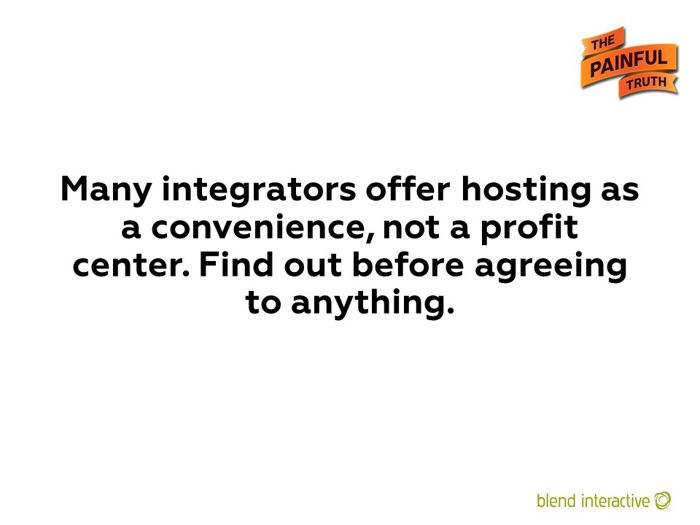
Many integrators would rather not host. They just do because their customers want it, or it’s easier for them to support customers they host. Often, both.
Don’t ever pressure someone into hosting your site if they don’t want to. Nothing good is going to come from that.
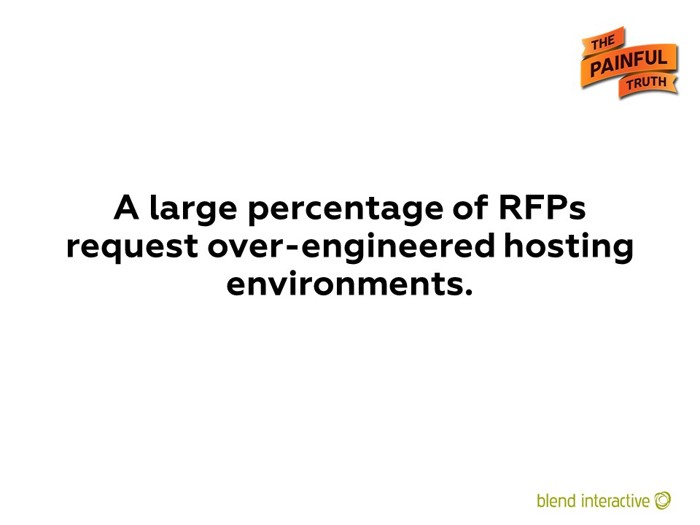
Repeat after me: redundancy costs money. Infrastructure is not free.

You don’t need six nines. You probably don’t even need four.
Three nines would mean nine hours of downtime, spread over a year, occurring during scheduled off-hours – if it happens at all. I know a lot of organizations that would be just fine with that.

I once had a community college ask for “six nines.” We showed them it would cost an extra $16,000 a year in hosting costs to achieve that. I told them the difference between that and four nines was about an hour of extra downtime per year.
I framed it as: “Someone comes to you and says, ‘If you take your website down once per year between 2 a.m. and 3 a.m., I will give you this check for $16,000.'”
They took that deal.
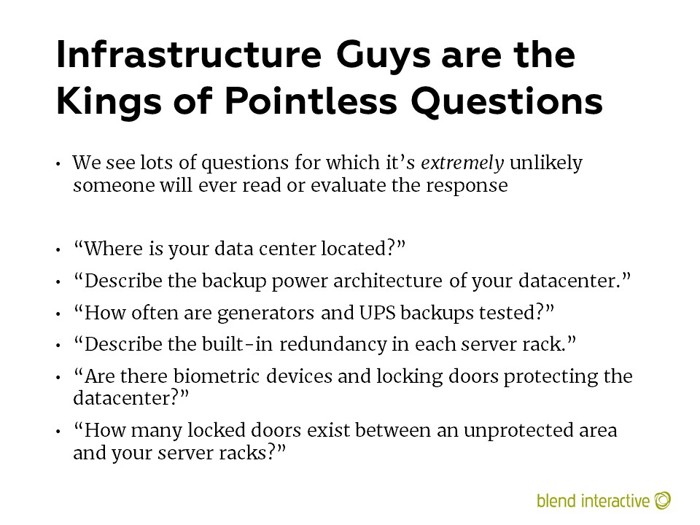
This is a dangerous title, because I don’t want to seem flippant about infrastructure. But, seriously – some of the most ridiculous questions I’ve ever seen in RFPs are about infrastructure.
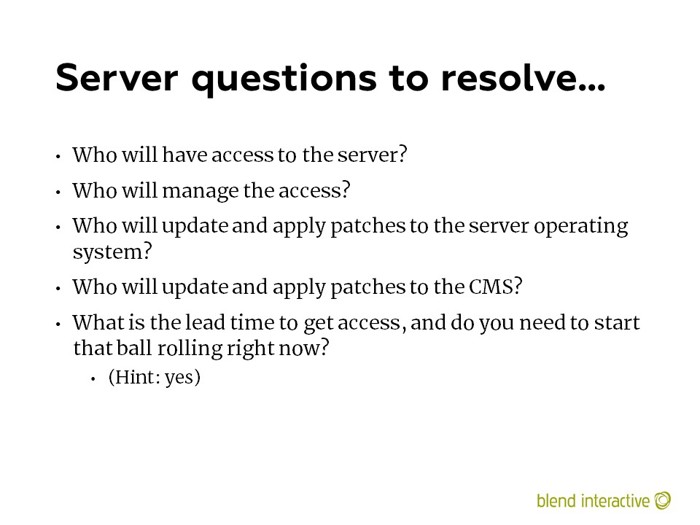
We’ve seen deployments get delayed because the org didn’t start talking about the production environment early enough.
Also, this is one of those things that changed greatly since I put this deck together. Very often now, the customer is deploying to the vendor’s cloud, which they usually have ready to go as part of the onboarding, so this is less of an issue today, I think.
